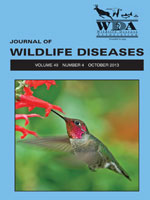An accurate assessment of animal health is fundamental to disease investigation in wildlife. Blood samples (n = 609) from several populations of the endangered woylie or brush-tailed bettong (Bettongia penicillata ogilbyi), collected between March 2006 and April 2010 in Western Australia and South Australia, were used to establish hematologic reference ranges. Differences between populations, sexes, and seasons were also investigated. Significant sex differences in hematocrit, red blood cell, total white blood cell, neutrophil, lymphocyte, and eosinophil counts were evident in at least one population. Generally, males had higher hematocrit and blood cell concentrations than did females. A positive association of the erythron parameters with rainfall was also detected. The hematologic characteristics of woylie populations described in this study greatly increase knowledge of the health status in these populations. The data also represent a baseline to enable monitoring and detection of changes in the health status in these populations as well as representing a valid dataset for comparison with hematologic investigations in other macropods and marsupials.
How to translate text using browser tools
1 October 2013
HEMATOLOGIC CHARACTERISTICS OF THE WOYLIE (BETTONGIA PENICILLATA OGILBYI)
Carlo Pacioni,
Ian D. Robertson,
Marika Maxwell,
Jason van Weenen,
Adrian F. Wayne
ACCESS THE FULL ARTICLE

Journal of Wildlife Diseases
Vol. 49 • No. 4
October 2013
Vol. 49 • No. 4
October 2013
bettong
health assessment
hematology
macropods
Seasonality
wild populations




